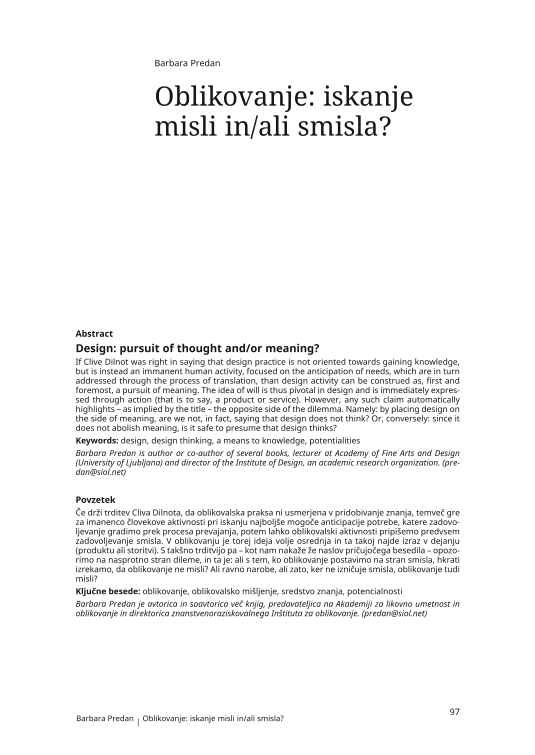If Clive Dilnot was right in saying that design practice is not oriented towards gaining knowledge, but is instead an immanent human activity, focused on the anticipation of needs, which are in turn addressed through the process of translation, than design activity can be construed as, first and foremost, a pursuit of meaning. The idea of will is thus pivotal in design and is immediately expressed through action (that is to say, a product or service). However, any such claim automatically highlights – as implied by the title – the opposite side of the dilemma. Namely: by placing design on the side of meaning, are we not, in fact, saying that design does not think? Or, conversely: since it does not abolish meaning, is it safe to presume that design thinks?




